by Julie McConnell | Jun 30, 2015
If you’ve been gardening for more than a few years, you may be confused by UF/IFAS recommendations that conflict with practices you’ve used for years. You aren’t imagining things, we do change recommendations based on the most current research available to help you with your agricultural endeavors.
I want to share a few common mistakes that gardeners make based on old recommendations but that research has shown are not the best choices. Check out the list below to see if you can break an old habit or two!
| Old Habit |
Current Recommendation |
| Throw a little “starter fertilizer” in the hole (or under new sod, seed, etc.) |
It is not beneficial to add fertilizer to plantinghole or under newly installed sod.Quick release (soluble) fertilizer may burn roots if added to planting hole.If applied properly, a slow release fertilizer may be applied to trees and shrubs but should be applied to the top of root ball or mulch following label instructions.Turfgrass grown from seed, sprig, or sod does not use fertilizer efficiently at planting. Wait 30 days to apply fertilizer – after roots have been established. |
| Dig the hole twice as deep and wide as the root ball for trees and shrubs |
1.5 times the width of the root ball is good, but planting too deep can be a death sentence.Planting depth should be 10% shallower than the distance from the topmost root to the base of the root ball. |
| Mulch 3-5 inches deep |
2-3 inches with a very thin layer directly over the rootball (less than 1 inch) and none touching trunk. This is the ideal amount to conserve water and suppress weeds. |
| Native and drought tolerant plants don’t need water |
All plants need water until established – depending on the type and size of the plant, weather, and soil conditions this may take months.Always plan to give a little TLC to newly installed plants no matter how tough they are supposed to be. |
by Taylor Vandiver | Oct 7, 2014
I think it’s safe to say fall is officially here. Shouts can be heard from local football stadiums, occasionally a crisp fall breeze will send us looking for a light jacket, and coffee shops are pushing all things pumpkin. Now that we can officially appreciate the cooler fall weather, it may be time to stretch our legs and marvel at the spectacular show of color our landscapes are putting on. Here are a few plants that are showing off this time of year.
Firebush (Hamelia patens) – This charming Florida native will delight everyone with beautiful orange-red flowers throughout most of the year. Hummingbirds and butterflies enjoy the nectar in the flowers. Firebush can reach a height and width of 8 to 12 feet. It is a fast growing plant that will grow well in part to full sun environments.
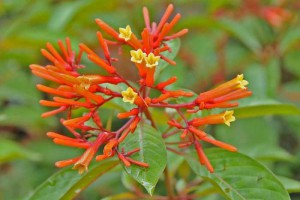
Bright orange-red blooms on a firebush. Photo courtesy UF/IFAS.
Salvia (Salvia spp.) – Salvias are great plants for bringing butterflies and hummingbirds to your garden and as a bonus, they have no serious pests. With hundreds of annual and perennial species coming in an array of colors and sizes, you can easily find one or more to complement your landscape. Salvias perform best in full sun environments and are considered drought tolerant.
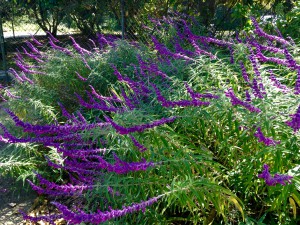
Deep purple blooms on a salvia in the landscape. Photo courtesy Taylor Vandiver.
Turk’s Cap (Malvaviscus arboreus) – Turk’s cap can add a cheerful pop of color at a time when little else is blooming. This old-fashioned Florida-Friendly shrub like perennial is related to the hibiscus. It’s known for its bright red flowers that always seem ready to open, but never do. Turk’s cap starts blooming in summer and keeps going until through winter, unless hit by a hard frost. It can grow in full sun and reach up to ten feet tall and ten feet wide, so give it room to grow. This easy-care native perennial requires little maintenance once it’s established.
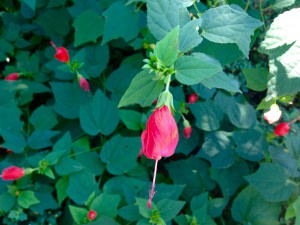
Turk’s cap showing off its unique blooms. Photo courtesy Taylor Vandiver
Coleus (Solenostemon scutellarioides) – When imagining fall color we often don’t consider coleus. However, the vibrant foliage can add interest to any landscape throughout the fall. Coleus is prized for its colorful foliage, which comes in shades of green, yellow, pink, red, and maroon. Coleus varieties can range from one to several feet in height. They can be used in hanging baskets, containers on patios, or in landscape beds. Coleus prefers partial shade and you can pinch the growing stems of young plants frequently to encourage dense foliage. Keep an eye out for mealybugs on coleus and use insecticidal soap if problems develop

Burnt orange foliage standing out amongst the neutral green of the landscape. Photo courtesy Taylor Vandiver.
Fore more information contact your local extension agent. Also you can visit us at gardeningsolutions.ifas.ufl.edu or edis.ifas.ufl.edu.
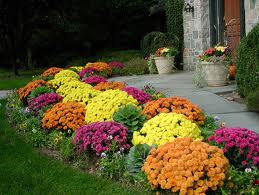
by Larry Williams | Sep 9, 2014
The Emerald Coast Home Show, Health Fair and Business Expo will include lawn and landscape seminars and an information booth hosted by the Okaloosa County Master Gardeners. This event will take place September 13 and 14 at the Emerald Coast Convention Center, 1250 Miracle Strip Parkway in Fort Walton Beach. The horticulture seminars will be provided by the UF/IFAS Extension Office in Okaloosa County.
 A feature of the Emerald Coast Home Show Health Fair and Business Expo will be an information booth hosted by the Okaloosa County Master Gardeners. Master Gardeners will be on hand to answer your gardening questions and to distribute information pertinent to gardening and lawn care on the Gulf Coast.
A feature of the Emerald Coast Home Show Health Fair and Business Expo will be an information booth hosted by the Okaloosa County Master Gardeners. Master Gardeners will be on hand to answer your gardening questions and to distribute information pertinent to gardening and lawn care on the Gulf Coast.
In addition to an information booth hosted by Master Gardeners, free educational seminars will be provided. On Sunday, September 14, I will provide a one hour seminar at 1p.m. entitled “Preparing Your Lawn for Fall and Winter.” This presentation will answer questions concerning preparing your lawn for the dormant period of winter. What’s the truth about” winterizer” fertilizers? Do you need to “winterize” your lawn? How should you water your lawn through the fall and winter? Should you overseed your lawn with annual ryegrass? What should you do about winter weeds in your lawn? What lawn pests are active during fall and winter? Learn the answers to these questions and the truth about winter lawn care for North Florida by attending the Preparing Your Lawn for Fall and Winter seminar.
The complete schedule of free seminars includes the following.
Saturday, September 13
11a.m. Margaret Stewart – Herbs, growing, using and preserving
1p.m. Scott Berry – Orchid basics
3 p.m. Karen Kirk-Williams – Great plants for fall and winter color
Sunday, September 14
1 p.m. Larry Williams – Preparing Your Lawn for Fall and Winter
2 p.m. Marie Harrison – Help! Pollinators in peril
The Emerald Coast Home Show, Health Fair and Business Expo will be open September 13 from 10 a.m. to 6 p.m. and September 14 from 11 a.m. to 4 p.m. and offers free admission, door prizes and giveaway items along with 100 vendors and free health care evaluations.
Visit www.emeraldcoasthomeshow.com for more information.
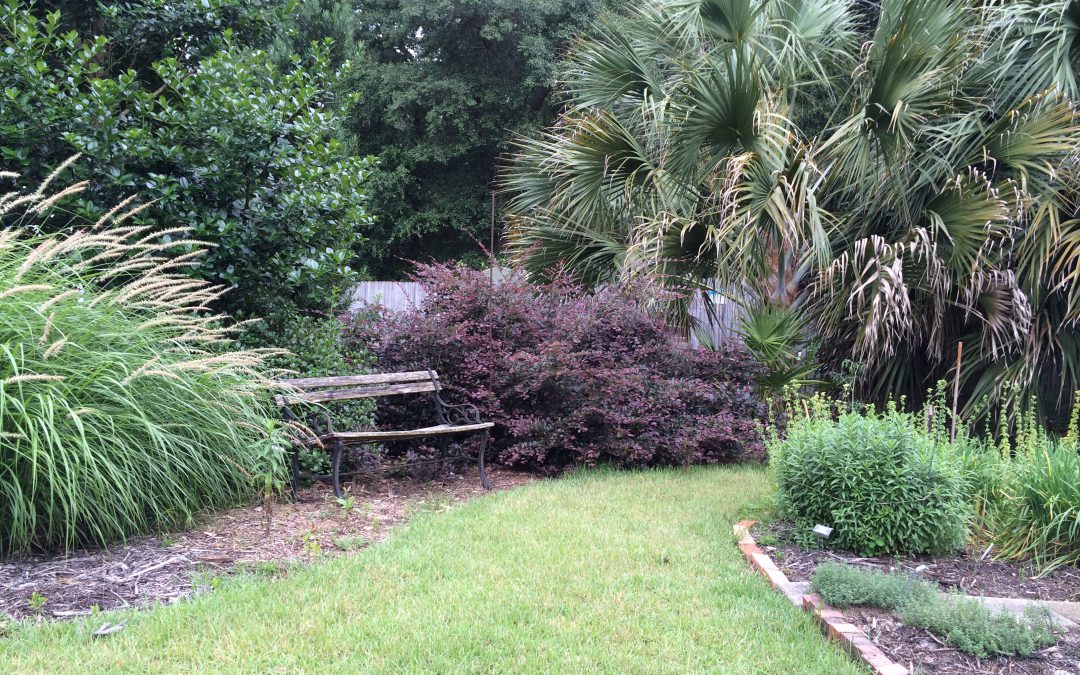
by Roy Carter | Jun 23, 2014
Summertime is vacation time for people, not plants! While getting ready for that long awaited trip, it’s easy to forget about your lawn, landscape, vegetable garden and house plants. A little time spent preparing your leafy friends for your absence could save you needless worry and hours of extra work when you get back.
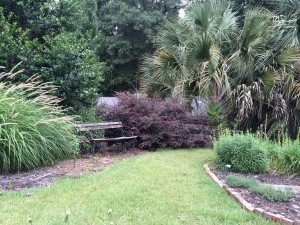
Prepare your landscape for your absence.
Photo by Mary Derrick, UF IFAS
A vacation may be relaxing and rejuvenating for you and your family, but it can be hazardous, even deadly, for your plants. Unless you make adequate preparations before leaving, you could return to vegetable disaster.
One of the first things you might do before leaving home is ask a neighbor to check your plants periodically while you’re gone. All plants need some care. During an extended vacation container grown plants require special attention and different species have different needs. Be sure you give your friend specific instructions for the care of each type.
If you can’t find someone to personally look after your plants while you’re away, there’s plenty you can do prior to departure to make sure you don’t come home to a limp landscape and sickly house plants. Outdoor container plants should be placed in a shady area to conserve moisture. Under a tree or on the north side of a building are good locations. A thick layer of mulch will help conserve moisture for landscape plantings. Mow your lawn just before leaving, cutting the grass a little closer than usual. An unkept lawn can encourage disease, and it’s a tell-tale sign that no one’s home.
Give lawn and landscape plants a heavy watering – especially recently planted beds, which will need extra moisture. Also, thoroughly spray or dust your plants to protect them from insects and diseases while you’re away. If you have flowering annuals, cut the blossoms before departing. If you don’t, they’ll soon stop blooming. Harvest all ripe or nearly ripe fruits and vegetables. Like flowers, they will continue to produce only if they’re picked frequently. Otherwise, they’ll go to seed.
Do a thorough job of weeding. If weeds are allowed to go to seed while you’re away, you can expect to encounter much more difficult problems later in the season – even next year – when the seeds sprout. Weeding eliminates a major source of competition for your landscape plants’ food and water which may be in short supply during your absence.
Plants kept indoors require special consideration. Before leaving home, place your house plants in a room which receives indirect sunlight. Direct exposure to the sun will dry the soil too quickly. Of course, you don’t want to put your plants in a room that’s too dark, either. Too little light will almost always result in leaf drop. And, just before you depart, be sure to water your house plants thoroughly. This is especially vital, because – unlike lawn grass and landscape ornamentals – house plants cannot benefit from any rain that may fall while you’re gone.
You’ll enjoy your vacation more by making sure your plants are well prepared for your absence.
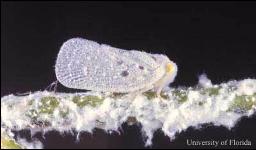
by Alex Bolques | Jun 17, 2014
Homeowner accounts of white fluffy woolly masses on woody ornamentals have been on the rise. They can appear on the ends of a wide variety of woody ornamental branches in the landscape. A closer inspection of these white woolly masses can provide the curious observer with a startling surprise. “It’s Alive!” It moves and seems to jump at you, most likely jumping away from you. Once you have recovered from the mildly frightful encounter, you ask yourself, “What was that?”

Adult citrus flatid planthopper, Metcalfa pruinosa
(Say). Credits: Photograph by: Lyle J. Buss, University of Florida
They are planthoppers (Metcalfa pruinosa), an insect in the order Hemiptera. The common name for this woolly looking planthopper is the citrus flatid planthopper (CFP). As the name implies, they occur on citrus but can also be found on many woody ornamentals and fruit trees. The adult planthopper wing arrangement is tent-like, meaning that the forewings are held over the insect abdomen in a tent configuration.
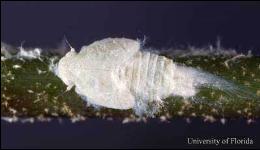
Nymph of the citrus flatid planthopper, Metcalfa
pruinosa (Say). Credits: Photograph by: Lyle J. Buss,
University of Florida
The nymph, young immature insect, produces the white woolly material that is characteristic of CFP. At first sight, they can be mistaken for mealy bugs, which may look similar since they are covered with cottony white filaments. They can also be mistaken for cottony cushion scale.

Mealybugs. Credits: James Castner, University
of Florida
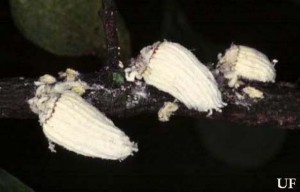
Cottony cushion scales, Icerya purchasi, on twig.
Credits: James Castner, University of Florida
In both of these cases of mistaken identities, the insect will not jump or hop around. No chemical control is necessary although sooty mold can occur on heavily populated plants. In that case, a soapy water treatment can be applied.
Follow these links to more information on the citrus flatid planthopper, mealy bugs, and cottony-cushion scale.











